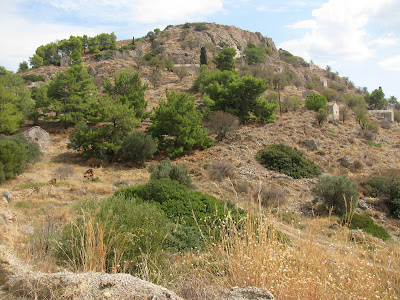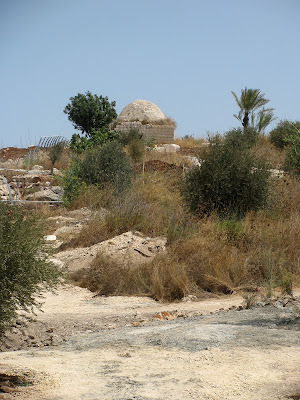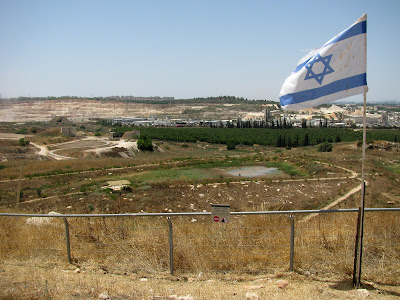After four very busy days in Athens we were ready to take things a bit easier. We took the ferry from the mainland over to Aegina, one of the Saronic Islands of Greece in the Saronic Gulf, 27 km from Athens. Aegina was a major power in the classical Greek times and for a period Athens' main competitor. It was designated as the first capital of the newly formed Greek State, from January 1828 until December 1829, after the period of the Greek Revolution of 1821.
The island is essentially an extinct volcano. Two-thirds of it is rugged and mountainous, while the rest, in the north and west, consists of fertile plains. The island is renowned for its pistachios, and the Temple of Aphea, one of the most important in the country. The main town on the island of Aegina is also called Aegina. This is the capital and principal port and therefore pretty busy with tourists, hotels, restaurants and things to do. On the eastern side of the island is the village of Agia Marina, where we stayed. The village is named after the church of the same name that sits above it.
We took a day off by the hotel pool before picking up our rental car, ready to explore the island. Our first stop was the Temple of Aphaia, located on a hilltop close to Agia Marina. Besides having a spectacular view, the temple is a very well preserved example of the Doric style and is the most important archaeological site in the Saronic islands and one of the most important in Greece. It was built in 480 BCE (on the site of an even older temple) when Aegina was at the height of its power.
There have been significant bronze, pottery and pediment sculptures found at the temple, including a marble sculpture of a fallen Hero and Heracles (Hercules) defending him with a bow and arrow. A large number of parts of the Temple of Aphaia were discovered in 1811 by English and German archaeologists, sold to Louis of Bavaria and finally ended up at Munich in 1828, where they have been exhibited ever since. In a special hall of the Glyptothek of Munich, named "Aiginetes", there are parts of the temple, a part of the relief sculptures, 17 statues, including a statue of Athena, and more.

Another place of interest on the island are the ruins of Paleochora, above, east of Aegina town. This was the capital of the island from the 9th till the 18th century, when villages were located inland to be safe from pirates. Aegina was one of the unlucky towns because it was destroyed once by the Ottoman pirate Barbarossa in 1537 and all the inhabitants were taken away as slaves. All that remains are a number of small churches in various states of decline, but it is a fascinating place to explore and one that I was very pleased to have visited.
After our hike we stopped briefly at the nearby Monastery of Agiou Nektarou, apparently the most important religious monument of Aegina. The enormous new church holds the remains of Anastasios Kefalas, a hermit monk who died in 1920 and was the first orthodox saint of the 20th Century, canonized in 1961.
The following day we drove to the main town of Aegina. The place was buzzing with people enjoying the day in the cafes and tavernas. We walked along the busy waterfront, with its traditional fishing boats and guys mending their nets. The port of Aegina is a busy one with ferries, Flying Dolphins (hydrofoil passenger ferries), cruise ships, catamarans and fishing boats sailing in and out, depositing people, cars and fish. The pistachios produced in Aegina are famous all over Greece and are sold in small shops and booths in the town. We bought a couple of bags at a stand located close to the harbour. They were delicious!
Aegina town is a lovely little town with beautiful neoclassical buildings, thin narrow, winding streets, nice squares and brightly coloured buildings. North of the port of the town, on the top of a low hill, stands the remaining column of an ancient temple dedicated to Apollo. This site is called Kolona (column) and excavations have revealed various ruins, as well as a 5,000 year old settlement and layers of city life. A little museum displays the various interesting findings. Other sites worth seeing in the town include the Tower of Markellos, a watchtower erected in the late 17th century by Venetians as part of the greater fortifications that guarded the port, the Eynardeio Central School, a neoclassical building that stands next to the Cathedral of Aegina, and the fish market, situated in a road parallel to the waterfront.
Numerous cafes with views of the sea and the harbour operate along the waterfront. After a few hours exploring the town, we sat down for delicious pistachio gelato. It was the perfect way to end our day there.

Moni islet is not inhabited, as there is no drinkable water. The only inhabitants are some deer, peacocks, Cretan Ibex and squirrels. The deer and the peacocks have grown especially accustomed to human presence and they greeted us as we disembarked. They clearly hoped we had something for them to eat!
Moni is the property of the Holy Monastery of Panagia Chrysoleontissa of Aegina - hence its name, "Moni", which in Greek translates into "monastery". The islet was under the jurisdiction of the Greek Travel Club for 30 years, from 1960 to 1990. In 1962 it was decided that it should be a shelter for wild animals and access was restricted to only a few months per year through the small boats from Aegina, without the possibility for an overnight stay.
On the top of the islet's triangular peak, a crumbling structure reachable only by a strenuous hike is said to be the remains of a German lookout post. It has been standing there since World War II, when the Germans used Moni islet to defend the port of Piraeus from the Allies. We didn't hike to the lookout post but rather spent our time on the islet walking along the coast and swimming in the beautiful turquoise waters close to where we had disembarked. Moni islet has several small beaches suitable for swimming, especially on the north coast. These beaches are surrounded by gorgeous pine forests.
And then it was time to move on again, this time to the island of Agistri, just 14 km away.
* This post has been shared on Sundays on Silverado, Wordless Wednesday (on Tuesday), Nature Notes, My Corner of the World, Wild Bird Wednesday and Saturday's Critters.










































.png)
















































